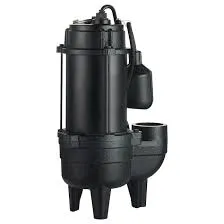English
- Afrikaans
- Albanian
- Amharic
- Arabic
- Armenian
- Azerbaijani
- Basque
- Belarusian
- Bengali
- Bosnian
- Bulgarian
- Catalan
- Cebuano
- Corsican
- Croatian
- Czech
- Danish
- Dutch
- English
- Esperanto
- Estonian
- Finnish
- French
- Frisian
- Galician
- Georgian
- German
- Greek
- Gujarati
- Haitian Creole
- hausa
- hawaiian
- Hebrew
- Hindi
- Miao
- Hungarian
- Icelandic
- igbo
- Indonesian
- irish
- Italian
- Japanese
- Javanese
- Kannada
- kazakh
- Khmer
- Rwandese
- Korean
- Kurdish
- Kyrgyz
- Lao
- Latin
- Latvian
- Lithuanian
- Luxembourgish
- Macedonian
- Malgashi
- Malay
- Malayalam
- Maltese
- Maori
- Marathi
- Mongolian
- Myanmar
- Nepali
- Norwegian
- Norwegian
- Occitan
- Pashto
- Persian
- Polish
- Portuguese
- Punjabi
- Romanian
- Russian
- Samoan
- Scottish Gaelic
- Serbian
- Sesotho
- Shona
- Sindhi
- Sinhala
- Slovak
- Slovenian
- Somali
- Spanish
- Sundanese
- Swahili
- Swedish
- Tagalog
- Tajik
- Tamil
- Tatar
- Telugu
- Thai
- Turkish
- Turkmen
- Ukrainian
- Urdu
- Uighur
- Uzbek
- Vietnamese
- Welsh
- Bantu
- Yiddish
- Yoruba
- Zulu
Telephone: +86 13120555503
Email: frank@cypump.com
Nov . 25, 2024 04:15 Back to list
Optimizing Pump Efficiency for Slurry Transportation in Industrial Applications
The Importance of Pumping Slurry A Comprehensive Overview
In various industrial applications, the movement of materials in the form of a mixture of solids and liquids is commonplace. This mixture, often referred to as slurry, plays a crucial role in processes such as mining, construction, and wastewater treatment. Understanding how pumps operate in the slurry transport process can greatly enhance efficiency and safety in these sectors.
What is Slurry?
A slurry is a semi-liquid mixture that contains solid particles suspended in a liquid. It is typically used in industries where the conveyance of solid materials is necessary but direct handling or transportation is impractical. Examples of slurries include cement mixtures, coal slurry, and tailings from mining operations. The composition and viscosity of the slurry can vary significantly, which poses unique challenges for transport and processing.
The Role of Slurry Pumps
Slurry pumps are specialized devices designed to move slurries from one location to another. Unlike conventional water pumps, slurry pumps are engineered to handle highly viscous, abrasive, and corrosive materials. This capability is essential, as slurries can contain hard particles that can wear down standard pumps within a short period.
There are various types of pumps used for slurry, including centrifugal pumps, positive displacement pumps, and submersible pumps. Centrifugal pumps are the most common, utilizing rotational energy to facilitate fluid movement. They are efficient for lower viscosity slurries and are preferred in applications dealing with mild abrasiveness. On the other hand, positive displacement pumps are utilized for thicker slurries, providing a constant flow and pressure which is ideal for high-viscosity materials.
Challenges in Pumping Slurry
Pumping slurry is fraught with challenges that require careful consideration. One significant issue is wear and tear on the pump components caused by the abrasive nature of the solids in the slurry. This necessitates pumps made from high-durability materials, and regular maintenance is crucial to ensure they operate effectively.
pump slurry

Another challenge is the potential for blockages in the pump or piping systems. Slurries with a high concentration of solids can settle if not maintained properly, leading to clogs that can halt operations. To mitigate this risk, it's important to evaluate the slurry's characteristics before selection and operation of the pumping system. Regular monitoring of the flow rates and pressures can also help catch potential issues early.
Optimization Techniques
To optimize the efficiency of slurry pumping, various methods can be employed. One of the primary techniques is to choose the correct pump type based on the slurry's properties, including particle size, density, and viscosity. Understanding these parameters allows operators to select a pump that can handle the material without excess wear or energy consumption.
Additionally, the pump's operating conditions can be fine-tuned. This includes adjusting the speed and pressure to match the requirements of the slurry being pumped. Using variable frequency drives (VFDs) can assist in achieving optimal performance by allowing for real-time adjustments based on operational needs.
Environmental Considerations
The handling and transport of slurry have significant environmental implications. For instance, in mining operations, the disposal of tailings can pose a risk of contamination if not properly managed. Pumps also play a role in wastewater treatment, where slurry must be processed to remove harmful contaminants before being released back into the environment.
Investing in efficient and reliable slurry pumping systems can help minimize environmental impact while ensuring compliance with regulations. Sustainable practices, such as recycling water used in slurry processes, can further contribute to environmental preservation.
Conclusion
Pumping slurry is an integral part of many industrial applications, allowing for the efficient and effective transportation of materials that would otherwise be difficult to handle. By understanding the properties of slurries, the intricacies of pump operation, and implementing best practices, industries can enhance productivity while minimizing wear and environmental impact. As technology continues to advance, innovative solutions for slurry pumping will undoubtedly emerge, paving the way for even greater efficiencies in the years to come.
-
ISG Series Vertical Pipeline Pump - Chi Yuan Pumps Co., LTD.
NewsJul.30,2025
-
ISG Series Vertical Pipeline Pump - Chi Yuan Pumps Co., LTD.|energy-efficient fluid handling&industrial durability
NewsJul.30,2025
-
ISG Series Vertical Pipeline Pump - Chi Yuan Pumps | Advanced Engineering&Industrial Efficiency
NewsJul.30,2025
-
ISG Series Pipeline Pump - Chi Yuan Pumps | High Efficiency, Energy Saving
NewsJul.30,2025
-
ISG Series Vertical Pipeline Pump-Chi Yuan Pumps|High Efficiency&Reliable Performance
NewsJul.29,2025
-
ISG Series Vertical Pipeline Pump|High Efficiency&Low Noise
NewsJul.29,2025










